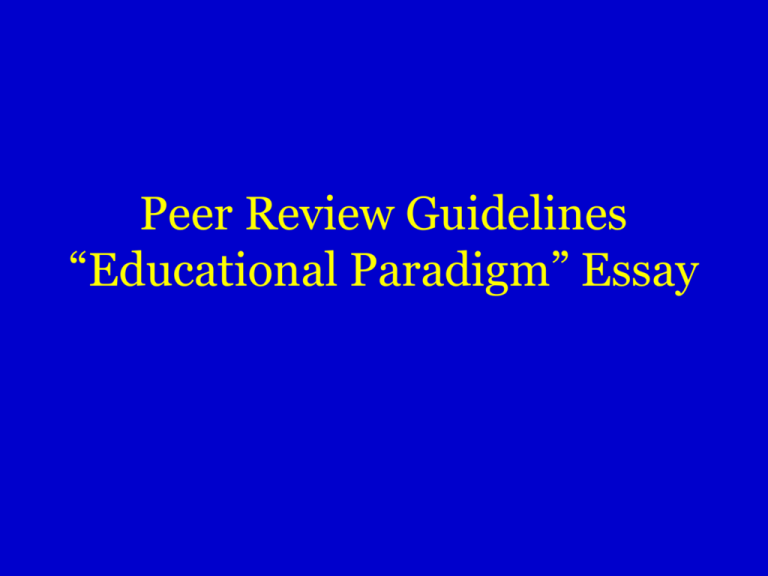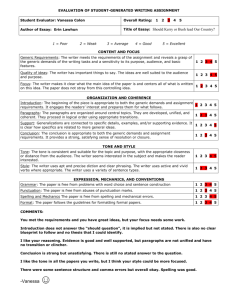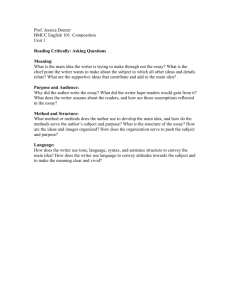Peer Review Guidelines *Educational Paradigm* Essay
advertisement

Peer Review Guidelines “Educational Paradigm” Essay The Peer Review… • Mark one copy as “My Copy” • At the top of “My Copy,” write the three biggest concerns you have about this paper • Work with a partner • Before reading your paper, tell your partner what you are most concerned about with this piece • Read your paper aloud to your partner as she/he reads the copy you brought • Pause as needed to make corrections as you read. • Elicit useful feedback from your editing partner (more than “It’s good.”). • Discuss your paper—the good, the bad, and the ugly Reviewers… • Be helpful!!! – Offer more feedback than “It’s good.” or “I liked it.” – Tell the writer what parts of the paper worked for you as a reader. – Tell the writer what parts could be improved to make the paper more effective. – Read with the writer’s three major concerns in mind. Give feedback on those concerns. – Mark punctuation, spelling, and typographical errors as you read. If you aren’t sure, mark it anyway and then check the dictionary. – Write a note on the back of the paper that tells the writer specific comments about the paper. If you liked it, tell the writer what worked. If you see room for improvement, tell the writer what needs to be improved. Style Comments • Tone… – Did the writer accomplish a conversational tone? – Did the writer use the language and sentences that were appropriate for the tone in this paper? • Audience… – Did the writer acknowledge the audience? – Did the writer seem to consider that there was an audience reading the paper? • Detail… – Did the writer give you enough detail that you can share in the experiences that she or he described? – Can you find details that appeal to readers’ senses? • Analysis… – Did the writer use what happened in his or her life to really get to the point of the essay? Proofread for… • Any use of the second person pronouns (the “you” family) • Spelling or questions on spelling • Sentence completion – (Fragments and Run-ons and Splices…Oh My!) • Format – (Heading and Spacing and Page Numbers…Oh My!) • Typographical Errors Post-Peer Review • After reading your paper aloud to a classmate and editing it as you read, conduct a Twenty-Error Error Hunt through your paper. – Most of us make little errors that we don’t notice – Pay close attention to typos, punctuation (especially commas and periods), and capitalization – Check your own spelling (No one knows as much as you do about your own spelling problems) • On the back of “My Copy” evaluate your own paper: – – – – How did your peer reviewer see your three major concerns? Did you get feedback that was helpful? What? What are you still concerned with in this paper? What is your revision plan? Due Next Time… • Pre-Writing • Outline • “My Copy” – Twenty-Errors marked in red – Evaluation of peer review on back • Peer-Edited Copy • Final Copy • One page self-reflection on this essay






